News publishers reflect on their biggest stories of the year
From the banking royal commission to the Thai cave rescue, it’s been a big year for news publishers. Here, some of Australia’s most well-respected editors share their highlights.
Michael Stutchbury, editor-in-chief, The Australian Financial Review
What was your best story of the year and/or your most impactful?
AFR Weekend of 3-4 March 2018 covered with Jonathan Shapiro’s investigation into Big Un Ltd, the best performing stock on the ASX in 2017. Shapiro’s ripping yarn exposed accounting irregularities that eventually resulted in the company going into administration.
Big Un’s Big Review TV claimed to be generating tens of millions of dollars of cash from producing online videos from small businesses, but Shapiro’s reporting showed the money was advanced by a finance company in an elaborate arrangement. The reporting also exposed that the chief executive had a previously undisclosed conviction for blackmail, making the Big Un saga one of the year’s biggest corporate scandals.
Shapiro won the 2018 Walkley award for business journalism on the strength of his Big Un investigation, one of several Financial Review investigations into questionable technology-based start-ups. The Financial Review is a pro-business newspaper. But that makes us doubly alert to spivs and the like.
What story are you the most proud of?
For the Financial Review, the story of 2018 was the Hayne royal commission into financial sector misconduct – aka the banking royal commission. The Financial Review editorialised against holding a royal commission into the banks. But, in the event, it has been the best thing that has happened to us in 2018. Like Trump for The Washington Post, the banking royal commission has struck at the core of the Financial Review’s readership and subscriber base.
The Financial Review determined from the start that we would throw the most journalistic resources at providing the best and most comprehensive coverage of the story that epitomised the popular loss of trust in big business. As the ACCC report into the big digital platforms showed, the Financial Review’s banking royal commission also rated most highly on Google searches.
On Wednesday April 18, the Financial Review made it clear AMP was ground zero. Over a little more than a day of public examination, the royal commission exposed the multi-billion dollar sham of charging fees for no service and the elaborate cover-up that followed. The lies it told to ASIC and the independent report it would present to the regulator after 25 drafts, following requests for changes from chairman Catherine Brenner, CEO Craig Meller and chief legal counsel Brain Salter, each of whom would capitulate to pressure and resign in the following days. This was the moment when the royal commission really started to make an impact.
Best frontpage(s)?
This year we saw your company become one of the biggest in the Australian media landscape: Is consolidation an opportunity or threat for other publishers?
The biggest Australian media industry story of the year undoubtedly was the Nine takeover of Fairfax Media. After the easing of media ownership restrictions, it allowed Nine and Fairfax to combine Australia’s traditional number one free-to-air TV station with Australia’s biggest quality newspaper titles, the number one Australian-based streaming service, the number two online property classifieds business and the market leading Macquarie radio network. This has produced Australia’s biggest, locally-owned media company. After half a decade of bracing disruption, the Financial Review was ready to invest in growth. Being part of Nine promises to help deliver this.
Ben English, editor, The Daily Telegraph
What was your best story of the year and/or your most impactful?
The Daily Telegraph’s coverage of the alleged rape of a seven-year-old girl in Kogarah last month. Our series of reports into the circumstances that led to the alleged rapist being on the streets sparked a sweeping inquiry into the State’s parole system, and, ultimately, the most sweeping changes to the system in a generation. This underscores the power and impact of The Daily Telegraph. When we apply our blowtorch to issues of critical importance, our impact is unrivalled.
What was your best front page for 2018?
Thursday, December 13. ‘An awful crime. The person is guilty. You may have read the news online already. Yet we can’t publish it. But trust us… It’s the nation’s biggest story’. It is somewhat perverse to nominate a front page without a story, but the issue it highlights is the antiquated approach of our legal framework in the digital age.
Aside from your publication, what was the best story this year?
The Teacher’s Pet investigation and podcast by Hedley Thomas at The Australian.
What do you believe has been the biggest industry change in the last year?
The acceleration of our audience first approach to journalism. The paywall model has transformed our operation from top to bottom, from conception of a story through to delivery.
This year we saw the merger of two of the biggest Australian media companies: Nine and Fairfax Media. Is consolidation a threat or an opportunity for publishers?
Both an opportunity and threat. Consolidation delivers scale and can make a rival more formidable. It is an opportunity because it forces us to more ruthlessly concentrate on how we can use our ecosystem to maximise impact, grow audiences and ensure we are more relevant than ever.
How will your publication set itself apart in a changing and consolidating landscape?
It is no accident that our slogan is ‘We’re for you’. Putting words into action ensures we are surgical in our commitment to delivering content that matters to our readers, across all platforms, 24/7. We are constantly refining how we construct and deliver stories to ensure we are essential reading for our audience. In order to do so, we need to continuously review the way we do things, and evolve accordingly.
Alex Lavelle, editor, The Age
What was your best story of the year and/or your most impactful?
The most contentious, difficult to navigate and impactful story has concerned a small number of Australian SAS soldiers, including Australia’s most decorated soldier Ben Roberts-Smith, being investigated over alleged war crimes in Afghanistan. The investigation was prompted by several soldiers who were willing to speak out about what they saw as an increasingly toxic culture within the SAS and a lack of accountability at the highest levels. Their concerns led to a number of official inquiries which are yet to publish their findings, and several stories in The Age. Mr Roberts-Smith denies the allegations and has launched defamation action.
What story are you the most proud of?
The extraordinary evidence that emanated from the royal commission into the banks and financial services this year vindicated our reporting, which was led by Adele Ferguson, and our editorial position to push for the inquiry. At the other end of a spectrum, but another example of how our reporting can make a difference was the story of disability pensioner John, who was filmed being pinned down, beaten and pepper sprayed by police. The story was The Age’s most read of the year and resulted in three officers being charged with assault and changes in the way police approach similar situations.
Best front page?
Our most impactful front page, on August 3, concerned the recent deaths of four women involved in alleged family violence incidents, with the headline THIS MUST STOP. We told the stories of the four women in the next four pages of the paper, outlining that for all the talk and increasing awareness about the prevalence of family violence, there had been no reduction in the number of women killed by family members. The stories had a huge reaction from readers.
Aside from your publication, what was the best story this year?
The Lawyer X scandal is a stunning story that will run and run, especially now there is a royal commission into the conduct of Victoria Police next year. While it has been covered extensively by all media since the suppression order was lifted earlier this month, the Herald Sun, and reporter Anthony Dowsley, have led the charge and deserve plenty of credit for pursuing the story, and challenging suppression orders and publishing bans for the past four years.
What do you believe has been the biggest industry change in the last year?
The merger between Fairfax Media and Nine. While the merger is the inevitable result of a change in legislation, major media organisations have been working more closely together for a while, with printing and distribution deals and more resources being shared. This trend will no doubt continue.
This year we saw your company become one of the biggest in the Australian media landscape: Is consolidation an opportunity or threat for other publishers?
That depends on how it is managed but with Nine guaranteeing continued investment in journalism this merger presents plenty of opportunity.
A strong and robust media is vital for any democratic society and competition between outlets is important to ensure sustained improvement and high standards.
How will your publication set itself apart in a changing and consolidating landscape?
We will continue to sharpen our focus on what matters to our readers in Melbourne and Victoria and deepen our connection with those readers and our community.
What is your prediction for next year?
Another big media merger.
Lenore Taylor, editor-in-chief of Guardian Australia
What was your best story of the year and/or your most impactful?
Deaths Inside, this interactive project collated crucial information and presented it in an innovative way. But the numbers only tell part of the story, the team led by Lorena Allam worked with families and their representatives to tell the human stories behind these terrible numbers. We were proud when it won a Walkley.
What story are you the most proud of?
Melissa Davey’s exclusive investigation into the disgraced Dr Emil Gayed. All the women he hurt deserved to have him held to account. Melissa was recognised with a media award from the Royal Australian and New Zealand College of Obstetricians and Gynaecologists.
Aside from your publication, what was the best story this year?
The Teacher’s Pet.
What do you believe has been the biggest industry change in the last year?
The takeover of Fairfax. I worked there for a long time and many respected colleagues work there still.
This year we saw the merger of two of the biggest Australian media companies: Nine and Fairfax Media. Is consolidation a threat or an opportunity for publishers?
A threat. Democratic debate requires a diversity of voices.
What is your prediction for next year?
That people will regret making predictions.
Lisa Davies, editor, The Sydney Morning Herald
What was your best story of the year and/or your most impactful?
The Wentworth by-election was one of the most interesting electoral battles in recent times. Malcolm Turnbull vacated the seat after he was deposed as prime minister, and it set off a course of events that would ultimately see a 17 percent margin obliterated and the election of Independent and former AMA president Kerryn Phelps. This contest was fascinating for our readers, and we covered it comprehensively. I think it was also significant in terms of the issues and politics at play in that one snapshot of time. As part of the campaign, we also chose to run a candidates forum, such was the interest in the story, and it really added value for our readers and subscribers.
What story are you the most proud of?
I’m proud of all our journalism – from the most complicated investigations by some of the nation’s best journalists, to the smaller stories that have a huge impact just because they move people to action or change, or just provide a bright spot in somebody’s day.
Best frontpage?
This showcases the best of what this newsroom can cover. Fantastic news breaking (the ABC story), terrific photos and state politics coverage (NSW Premier Gladys Berejiklian in action) an important story that effects people directly (recycling) then of course teasers to the best of what’s inside – sport, CBD gossip and international coverage.
We did this polling exactly six months out from the NSW election and it was the first to show that the NSW government has a fight on its hand. It also has a real water-cooler story (in the Serena Williams/Sunday Life interview) as well as pointers to so many great weekend stories inside.
Aside from your publication, what was the best story this year?
It’s hard to go past The Daily Telegraph’s “Bundle of Joyce” front page, in which they outed then-deputy PM Barnaby Joyce as having a baby with former staffer and ex journalist Vikki Campion. I don’t know if it was the best story of the year, or the best photo – but the photo certainly made the story a story and it had huge ramifications. While the rumours had been rife for ages, and Joyce’s office repeatedly denied it to all journalists, the Tele went after it and got the proof required to publish. Yes it was controversial but once published, it led to a string of questions about his conduct, the conduct of parliamentarians, and the way we expect our leaders to behave.
What do you believe has been the biggest industry change in the last year?
I think the increasing fear of defamation action on the back of some big legal cases has been a wake-up call for the mainstream media, and with it a renewed focus on whether the legislation is working as it was intended to. So much has changed with the media landscape that there’s a legitimate argument that the laws have not kept pace, but how to mount a case for change is challenging. We’ve begun to do that, and will continue to – because it doesn’t just affect big publishers, there are also cases being waged against unsuspecting individuals on social media.
This year we saw your company become one of the biggest in the Australian media landscape: Is consolidation an opportunity or threat for other publishers?
Consolidation is definitely an opportunity for us, to collaborate and reach greater audiences through the best use of our strengths. Other publishers may feel threatened by the sheer size of our combined reach, but there is opportunity for them too!
How will your publication set itself apart in a changing and consolidating landscape?
We will continue to focus on quality, independent journalism with the added advantage of collaboration efforts with our new partners at Nine, that help bring together the country’s most enduring and celebrated brands. The Herald will continue to place focus on doing what our readers and subscribers demand – a goal endorsed from the very top of our new combined company.
What is your prediction for next year?
Despite still being one of the most prosperous countries in the world, the public seems to be disengaged, and neglected by politicians too caught up in their own survival. I predict the upheaval in politics will continue unabated!
Christopher Dore, editor-in-chief, The Australian
Dore was the editor-in-chief of the Daily Telegraph until October.
What was your best story of the year and/or your most impactful?
From The Daily Telegraph’s perspective the Barnaby Joyce story, combined with Sharri Markson’s coverage of the federal leadership debacle – both the Dutton insurgency and the Morrison ascendency – was exceptional.
What story are you the most proud of?
Our story about the complaint to the Sydney Theatre Company about Geoffrey Rush.
What was your best front page for 2018?
It’s hard to go past Bundle Of Joyce. A sensational story, incredible news picture, and a brilliant headline. Unbeatable combination, that culminated in the second most powerful politician in Australia losing his job.
Aside from your publication, what was the best story this year?
There were two standout stories, aside from the Barnaby Joyce scandal. Clearly the demise of yet another Prime Minister and the Australian cricket captain and vice captain sprung cheating in a Test Match. When you add the theatre of the poor muppet asked to do the offending secreting the sandpaper down his pants to the impact on Australian sport and the national psyche – that’s an amazing tale in all its absurdity.
What do you believe has been the biggest industry change in the last year?
I’ve never been more exposed to more poor quality reporting, and more ill-informed commentary than I’ve seen this year. The collective press gallery response to the Barnaby Joyce expose, the ABC, Fairfax, The Guardian and Nine News Corp conspiracy agenda on the Turnbull leadership collapse and the outright hostility to The Daily Telegraph on Geoffrey Rush was appalling.
This year we saw the merger of two of the biggest Australian media companies: Nine and Fairfax Media. Is consolidation a threat or an opportunity for publishers?
It’s certainly not a threat.
What is your prediction for next year?
Shifting to my new role… The Australian will continue to be the most important newspaper in the country across all areas of national significance. Our level of experience in politics and business, in particular, as well as our breadth of journalistic talent is really unmatched. The ABC will head deeper into more irrelevant lifestyle journalism and as some of its political coverage becomes even more absurdly, and blindly, partisan; and as the Nine newspapers hand over any claim to serious national affairs journalism, The Australian will reinforce its role as the most significant and serious news organisation in the country.
Simon King, editor, nine.com.au
What was your best story of the year and/or your most impactful?
The Thai Cave rescue and Malcolm Turnbull leadership spill showed what an integrated Nine news room can deliver, but when it comes to impact the work of Emily McPherson this year has resulted in two government inquiries. As well as triggering a parliamentary inquiry into mould-related illnesses in Australia, a series of online exclusives by her revealed the failings of both pharmaceutical companies and doctors when it came to warning parents about the dangerous and, in some heartbreaking cases, deadly psychiatric side effects of asthma medication Singulair. As a result of Emily’s work, Federal Health Minister Greg Hunt ordered a review of the drug and less than five months later the Therapeutic Goods Administration called for warnings to be added inside the drug’s packaging.
What story are you the most proud of?
Since breaking the tragic story of the suicide of teenager Cassidy Trevan – whose bullying culminated in her gang raped by school mates – nine.com.au has pursued an awareness agenda on this most heartbreaking of issues which results in an average of eight young Australians taking their lives every week. One-in-five Australian children are now victims of cyberbullying. To show the true effect of cyberbullying we have built the relationships with victims and their families so they would tell us their stories. As well as a number of hard-hitting yarns it also resulted in this video – which has been viewed over 5.7 million times and is now used by a number of organisations to highlight and fight the problem.
Aside from your publication, what was the best story this year?
The world held its breath as Thai authorities brought 12 boys aged 11 to 16 and their coach out of the Tham Luang cave in Chiang Ra one by one.
An operation that involved the expertise of 17 different countries, united in a single goal, it was a story told fantastically by many news organisations. But more than that it was a tale of dignity and respect. The way the authorities protected those kids and nurtured them through the whole experience from discovery, to rescue, to rehabilitation showcased everything good about humanity. And at the heart of it – trying his best to stay out of the headlines – was Australian doctor Richard Harris.
What do you believe has been the biggest industry change in the last year?
Locally, it has been the merger between Nine and Fairfax to form the largest, locally-owned media company in the country.
And to answer the question is consolidation an opportunity or threat for publishers? The answer is both.
With Google and Facebook hoovering up ad revenue and destroying the industry – whilst at the same time trying to convince everyone they are facilitators for quality journalism – it is inevitable. And any press is better than none at all. That said, the more independent editorial voices we have the better and this is the commitment Nine has made in the merger and particularly in regard to The Sydney Morning Herald, The Age and The Australian Financial Review.
How will your publication set itself apart in a changing and consolidating landscape?
Original content. Over the last year we’ve found strong journalism brings back the readers. Which is very reassuring. The problem in the free online space is that for too long it has been an echo chamber and what has been presented to readers has been so poor it’s lost credibility. We drive every day to step away from that. We are committed to doing breaking news well and adding a layer of exclusive content – which next year will see the release of our first news podcast two years in the making. Having our own editorial voice and delivering a strong editorial product; if you offer that sort of quality in news, and then you add lifestyle and everything else that Nine can offer, it’s a pretty strong proposition.
What is your prediction for next year?
Here’s a shocker… another prime minister.
Bruce Guthrie, co-founder, The New Daily
What was your best story of the year and/or your most impactful?
The financial services royal commission. The New Daily was there every day, reporting every session, holding to account those with their hands in our readers’ pockets. Some of the evidence was gobsmacking, revealing greed and malpractice on a massive scale. Hopefully it will lead to better practices within the sector.
What story are you the most proud of?
Our reporting on the death of Sara Chivers. TND followed the illness and then the passing of this young mother with great sensitivity, as she grappled with her terrible fate. It was a window into extraordinary bravery, unbearable grief and the effect such a loss has on a young family. Tough to read at times, but ultimately life-affirming.
Aside from your publication, what was the best story this year?
The best story of the year was undoubtedly the Thai cave boys’ miraculous escape. It had everything, including a crucial Australian connection! It was nice to have an upbeat story that people wanted to read and read. The leadership spill was obviously defining, as was Australian cricket’s ’sandpaper gate’. Both exhibited the worst in people who were supposed to represent our best… almost mirror images of the Thai story, if you like. Trump was a big, ongoing story for us too. Elsewhere, I was impressed with Fairfax’s Don Burke reporting and, of course, the work of the Four Corners team. Exemplary.
What do you believe has been the biggest industry change in the last year?
Media mergers. We’ve already seen the first of them – Nine and Fairfax – and I suspect there will be more. It’s exactly what the government’s media law changes were designed to produce. It means our already highly concentrated news media will be even more concentrated, which is obviously not a good thing. The rapacity of Facebook and Google hit new heights too; I was slightly encouraged by the ACCC’s report of their conduct. Hopefully something will be done to rein them in or, at least, ensure they pay their fare share to media companies and taxpayers.
This year we saw the merger of two of the biggest Australian media companies: Nine and Fairfax Media. Is consolidation a threat or an opportunity for publishers?
It might be an opportunity for already big media companies to get even bigger, but it will make it even harder for independent start-ups like The New Daily to get traction in the marketplace. Mergers lead to job losses too, so we’ll end up with fewer journalists covering crucial sectors – politics and business chief among them – that require more scrutiny not less. In that sense it’s bad for democracy too.
How will your publication set itself apart in a changing and consolidating landscape?
One of the curious effects of the rise of digital is that publications are taking stronger, even strident positions in the marketplace – they’re moving right, left, up and down, leaving the middle pretty much untouched. We’re happy to be there, delivering journalism that meets the expectations of average Australians struggling with the day-to-day challenges of living and working. We choose to report and advise rather than vent about political ideology or culture wars. The simple fact that we’re not Murdoch or we’re not Nine or Seven sets us apart too. I suspect people will be looking for alternatives more and more. They’re tired of the same old voices that have been preaching to them for decades.
What is your prediction for next year?
There’ll be more media mergers or, at least, more cross-pollination between the three or four elephants left in the jungle. Sadly, I think the decline of print will quicken as mastheads change hands or direction. And I’m expecting Bill Shorten and Labor to win government which might give the ABC some breathing space. Lord knows they need it.
Kate de Brito, editor-in-chief, news.com.au
What was your best story of the year and/or your most impactful?
The ball tampering scandal stopped Australia – and our readers – in their tracks. The leadership spill was massive and readers couldn’t get enough of the royal wedding and royal tour. But the Thai cave rescue was the story with everything – gripping and suspenseful with a happy ending.
What story are you the most proud of?
The campaigns we ran on men’s suicide and organ donation had a huge amount of community support. But I’d be remiss if I didn’t mention James Weir’s TV recaps which made a lot of people laugh this year.
Aside from your publication, what was the best story this year?
The Daily Telegraph’s scoop on Barnaby Joyce. And Hedley Thomas’ work on The Australian’s investigative podcast series The Teacher’s Pet.
What do you believe has been the biggest industry change in the last year?
The lack of transparency around algorithms and the effect they have on online news. Everyone has to work much harder for far less result. Eventually publishers will tire of giving away their content for free to the global digital platforms.
This year we saw the merger of two of the biggest Australian media companies: Nine and Fairfax Media. Is consolidation a threat or an opportunity for publishers?
An opportunity, although it will be interesting to see how they keep their eye on the reader with such disparate titles. It can be hard to keep a newsroom steady when you are trying to balance competing strategies. But digital is all about change, you can’t retreat from that – and if we were frightened of it we wouldn’t work in digital.
How will your publication set itself apart in a changing and consolidating landscape?
We are already apart. We are the first Australian news site to hit 10 million UAs. Last Nielsen digital content ratings we were 1.9 million UAs ahead of our nearest competition. We think our audience speaks for itself and what sets us apart is our relentless focus on our readers.
Peter Holder, managing director, Daily Mail Australia
What was your best story of the year and/or your most impactful?
2018 was a breakthrough year for us in terms of delivering exclusive, local stories. It was our reporting of the suicide of Amy ‘Dolly’ Everett – once the face of Akubra – which sparked an overhaul of laws around cyber bullying, known as Dolly’s Law’. Another standout was chief Melbourne reporter Wayne Flower’s interview with Michael Rodgers, better known as Trolley Man, the unlikely hero of the Bourke Street terror attack.
What story are you the most proud of?
Again, plenty of local stories to choose from, but a particular favourite was Stephen Gibbs’ great article in which he tracked down many – but not all – of the pubgoers who appeared in Rennie Ellis’s iconic 1982 photo taken in the main bar of the long gone Airlie Beach Hotel. It was a fantastic read and one that found a life of its own when shared on Facebook.
Aside from your publication, what was the best story this year?
It’s hard to go past The Teacher’s Pet podcast investigating the almost 40-year mystery behind disappearance of devoted mother-of-two, Lynette Dawson. The Australian’s Hedley Thomas deserves all the accolades that come his way.
What do you believe has been the biggest industry change in the last year?
The fallibility of Facebook.
This year we saw the merger of two of the biggest Australian media companies: Nine and Fairfax Media. Is consolidation a threat or an opportunity for publishers?
At the risk of getting splinters in my arse from sitting on the fence, I think it’s a bit of both. As individual entities, Nine and Fairfax are more than worthy competitors. Together, on paper at least, Nine-Fairfax joins News Corp as another 800pound gorilla in the market. But a merger of that size means a lengthy period waiting for the dust to finally settle – culturally and operationally – and that provides opportunity for the smaller publishers to show their value in being nimble in both response and service.
What is your prediction for next year?
The ACCC to butt heads with Google and Facebook. And more of a hope than a prediction: Self-promoting “escort” Samantha X and Nasser, from the second series of Married at First Sight, to disappear completely from view and into well-deserved obscurity.
Mel Cornford, editor, 10 Daily
What was your best story of the year and/or your most impactful?
A story that launched our drought series – The Haunting Poem That Is The Silent Face Of Drought – which told the emotional tale of Darcy Howard, a 16-year-old whose family was battling the devastation of NSW’s drought crisis.
The full series reported on a real, relevant issue that had national interest and was told with heart and human spirit… with what has become our signature 10 daily tone. It’s one of the pieces I’m most proud of this year and continues to be one of our most engaged since launch.
What story are you the most proud of?
There are too many to choose from: Ant Sharwood’s awesome analysis of whether the Serena Williams incident was sexist, Lisa Wilkinson’s heartwarming tribute to Sam Ballard, Waleed Aly’s expert take on #libspill, Sandra Sully’s industry scoop on Lee Lin Chin’s shock SBS departure have all been major highlights.
But if I had to pick one it would be 10 Daily’s super-quirky Bachelor recaps. The TL;DR (too long, didn’t read) series has been widely shared and among our most- clicked content of the year. Fronted by Mat Whitehead, and produced by Nick Wray, I think we’ve successfully established our own Bach recap brand in what’s already a very crowded recap market.
Aside from your publication, what was the best story this year?
Few stories gripped the globe like the Wild Boars soccer team’s miraculous rescue from the Tham Luang cave. What could have ended in tragedy became the good news story of 2018.
It was a real win for us as a network also, as the story broke during 10 Daily’s infancy and quickly saw us roll to deliver 24/7 news coverage during the course of the rescue. Jumping to operate as an integrated digital newsroom so early on, and covering such an epic global story, ended up being our own successful mission.
What do you believe has been the biggest industry change in the last year?
Obviously the Nine/Fairfax merger was the story of the year from an industry point of view, and everyone is waiting to see just exactly what it will mean for their product offering. The other story of the year had to be the goings on at our national broadcaster.
This year we saw the merger of two of the biggest Australian media companies: Nine and Fairfax Media. Is consolidation a threat or an opportunity for publishers?
It’s what you make of it. As long as – as an editor – you bring plurality of opinions and diversity is your driving focus then you can continue to ensure that readers don’t suffer from decisions made in boardrooms.
How will your publication set itself apart in a changing and consolidating landscape?
I think 10 Daily already offers something unique. We set out to do things differently from the get-go – launching a new product in 2018 with the main players already established, it was our objective to take a fresh approach to news and video content… and shake things up a bit.
We cover news and views with a dose of personality. Where possible we look for a positive, interesting twist on things and our Good News stories drive a lot of traffic for us. But we can also be black and white when the story demands it. It’s our mix of the fun, quirk factor and the straight-up news delivery that makes 10 Daily different. Our close connections with 10 News First, The Project, Studio 10 and of course CBS are massive advantages for us.
What is your prediction for next year?
For 10 Daily, we want to build on the amazing start we’ve had. We’re getting to know our readers intimately and are keen to provide them with the best content possible, not just on site but branching into voice, podcasts and audio and the integration of voice-led content through our daily news mix.
I think we’ll also see a shift to other social platforms for news and content discovery. It will be interesting to see how it takes shape. Media companies’ close ties with Facebook, Twitter and Google will be increasingly important next year – this comes with pros and cons of course – but will be key to big events like the election.
Here’s to a great year for the industry and every hard-working journo it employs.
Simon Wheeler, director of content, Oath
What was your best story of the year and/or your most impactful?
That I’ll be sitting here in 12 months trying to make predictions that won’t come back to haunt me.

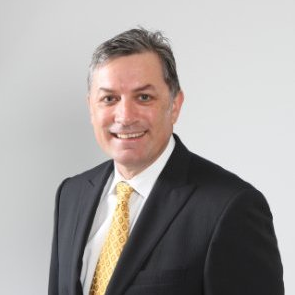
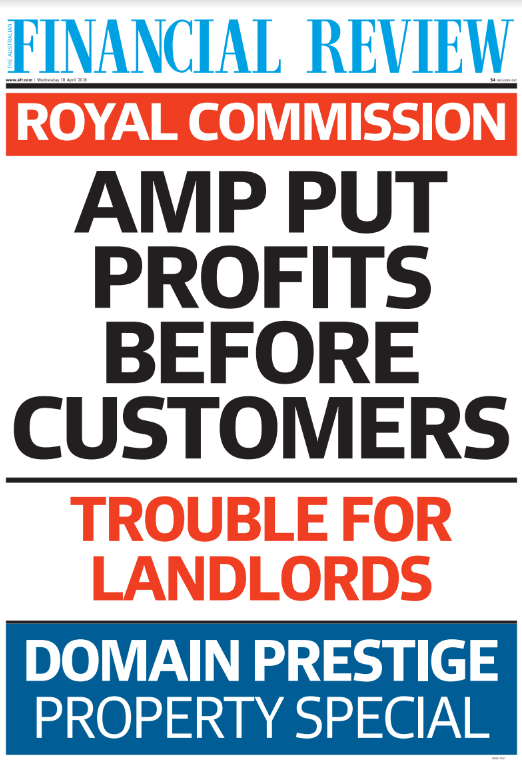



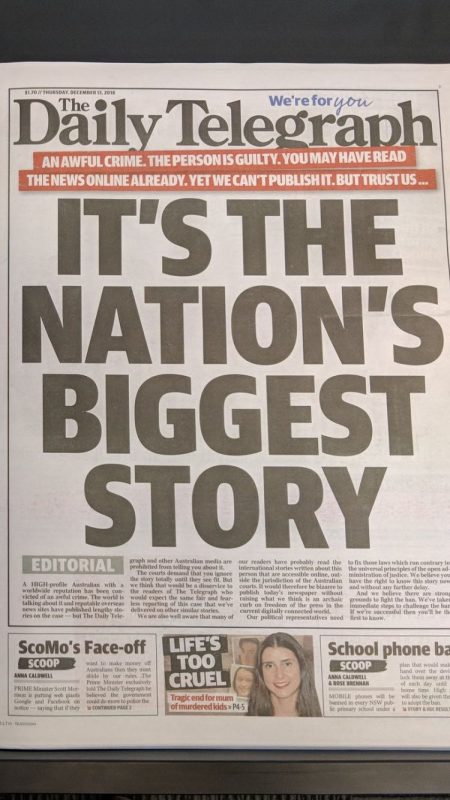
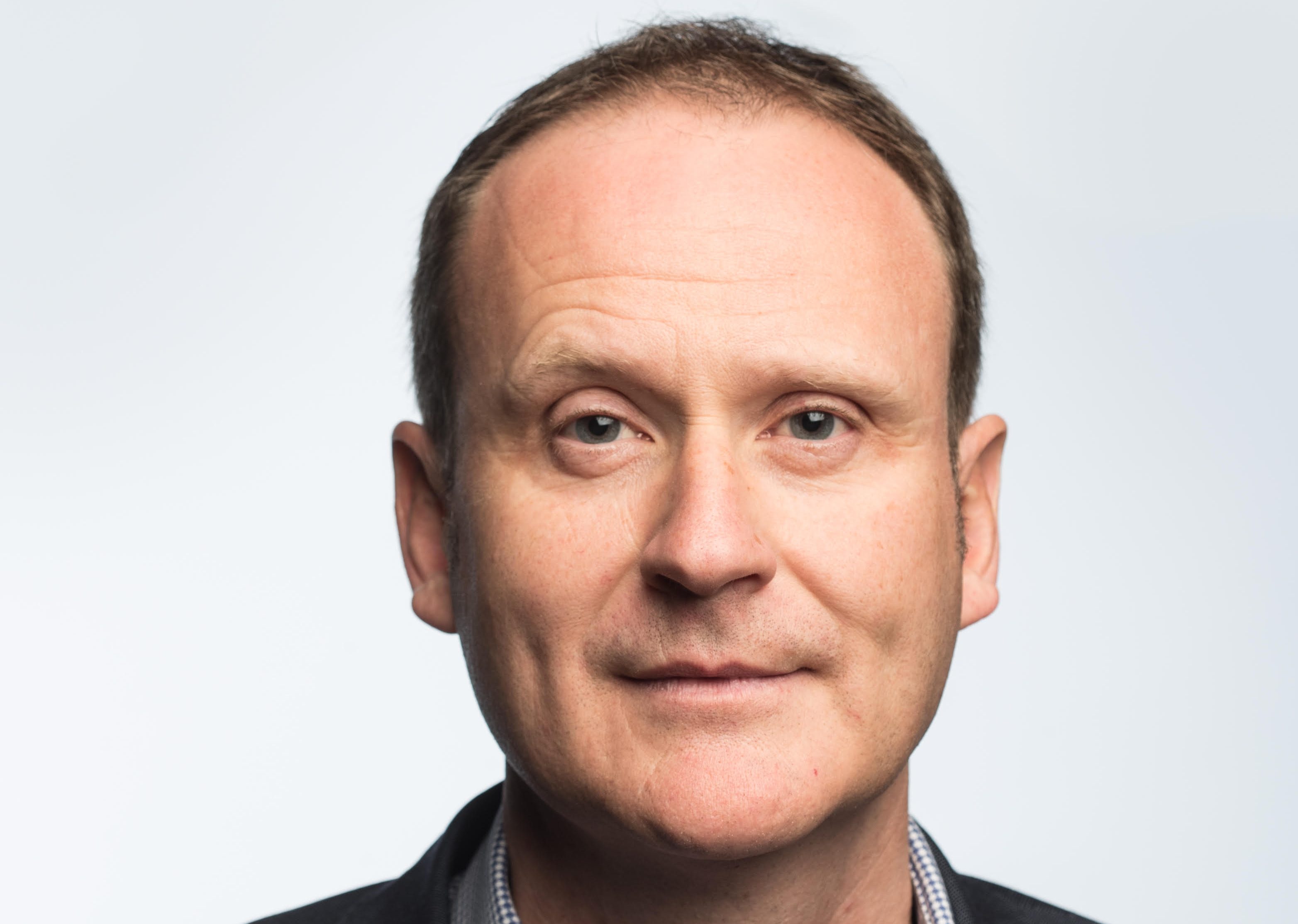
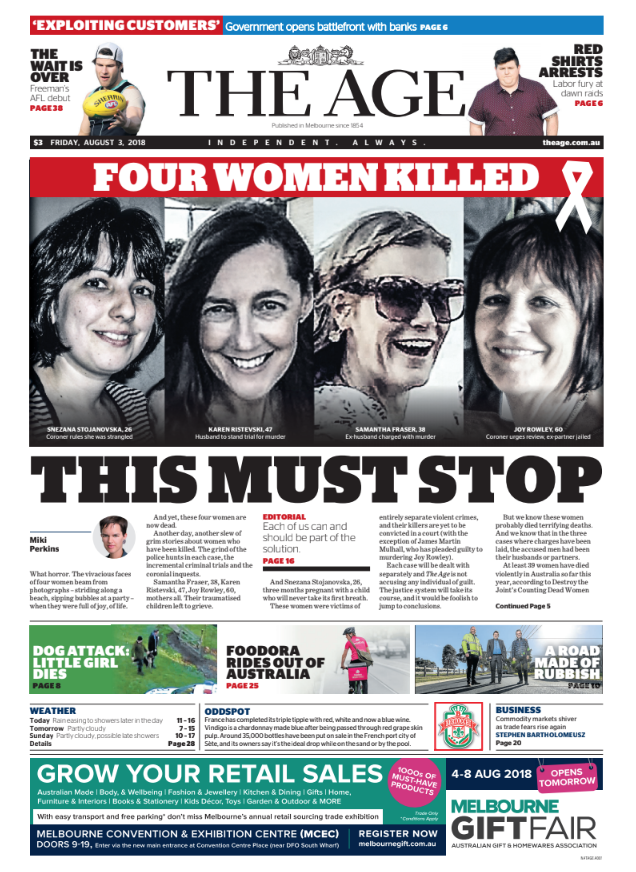


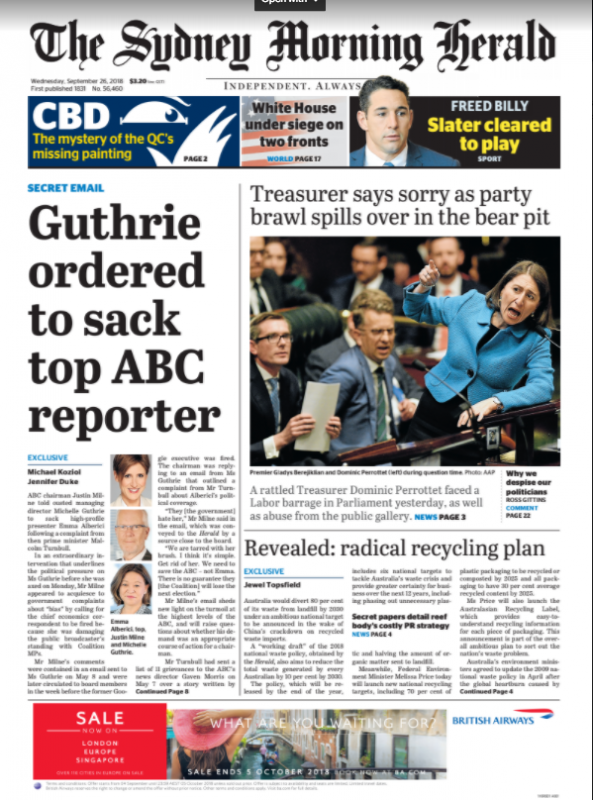
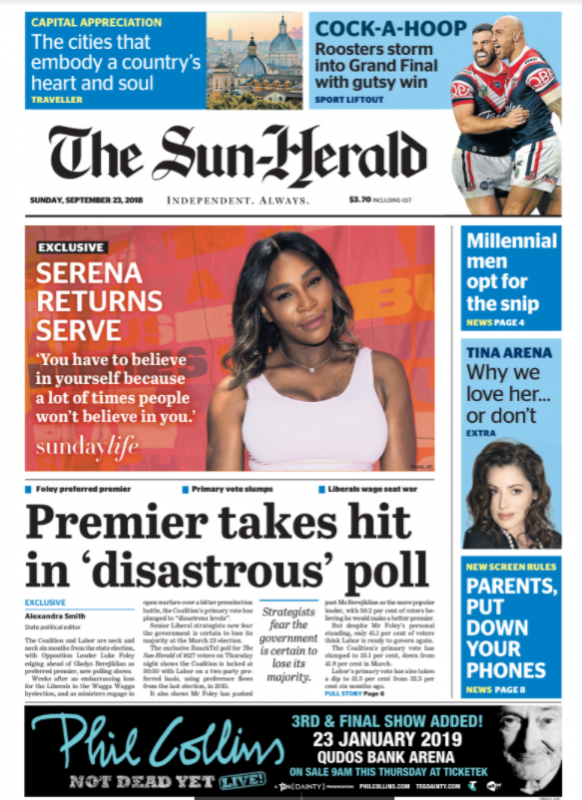



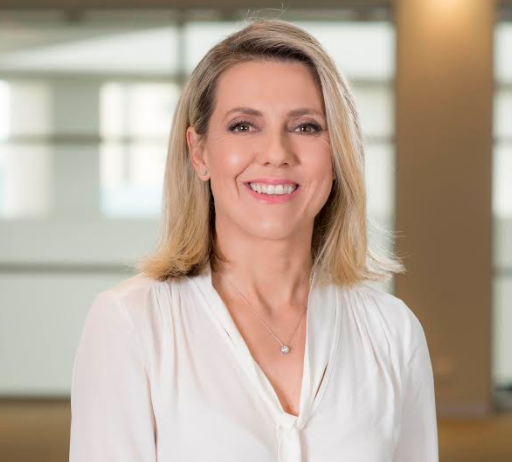

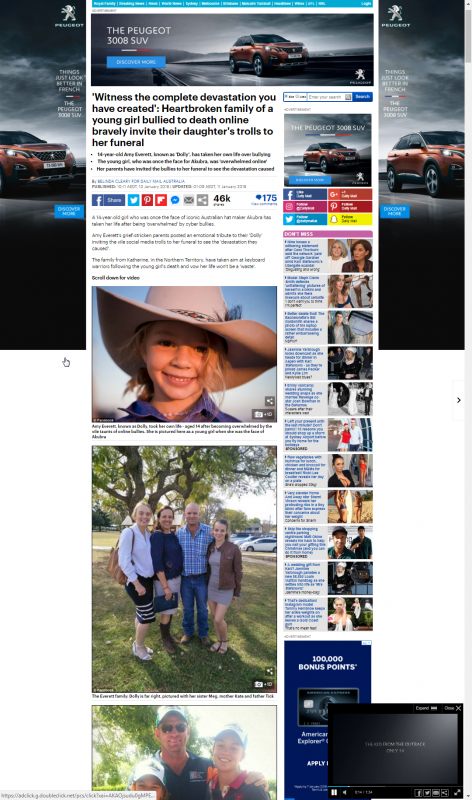
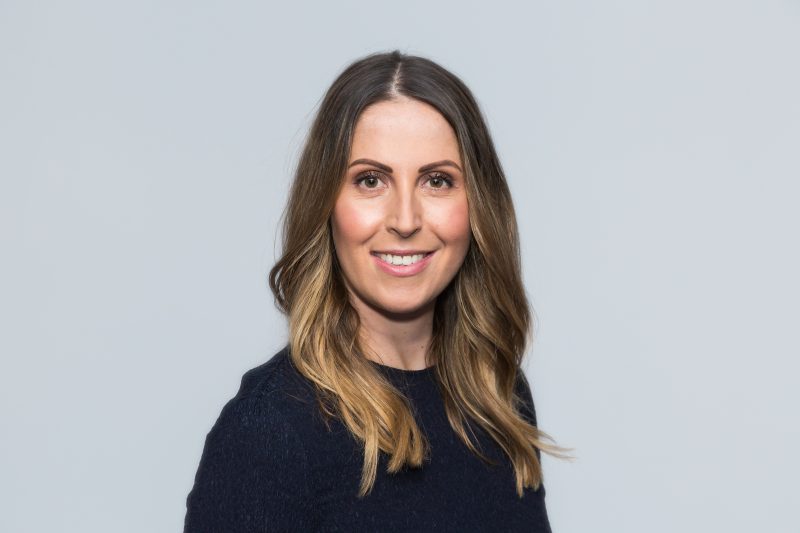
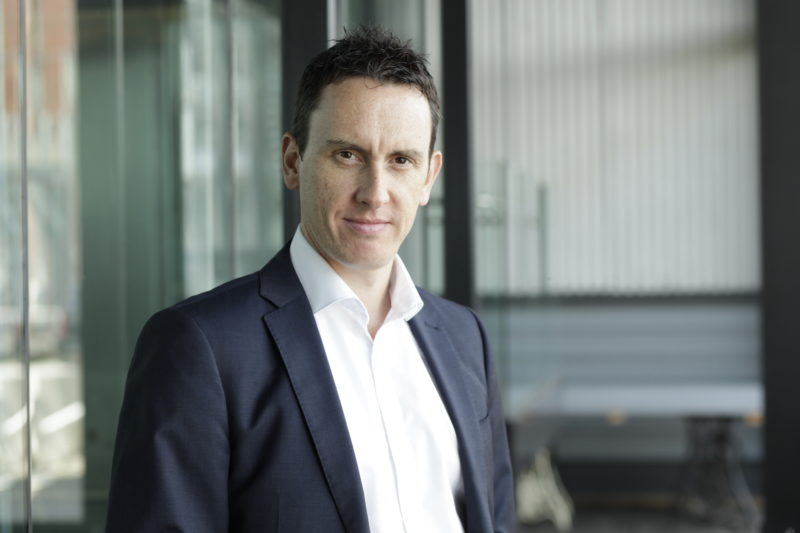

Stutch has wasted no time cracking open the Kool Aid – “Australia’s traditional number one station” ? That would be Seven, not Nine.
There is something sad about the AFR editor talking about throwing editorial resources at an issue. Clearly he has none.